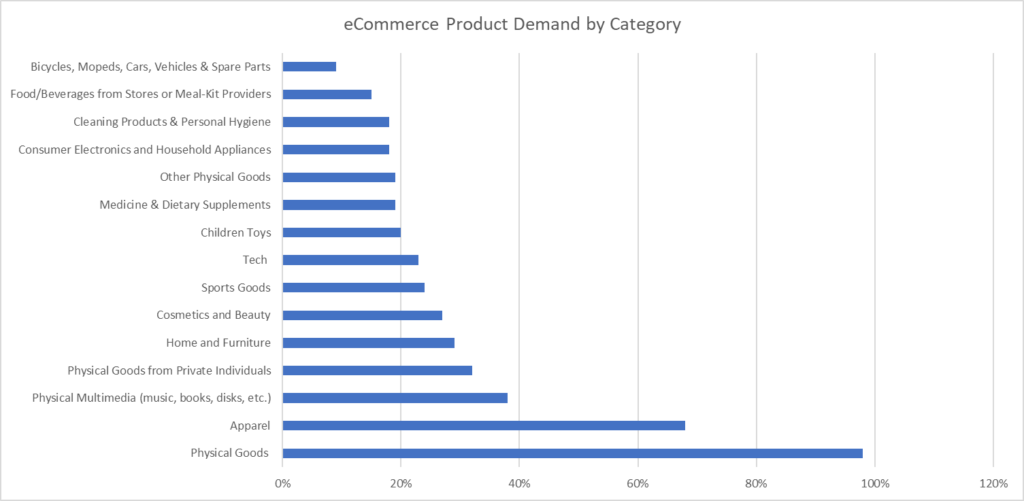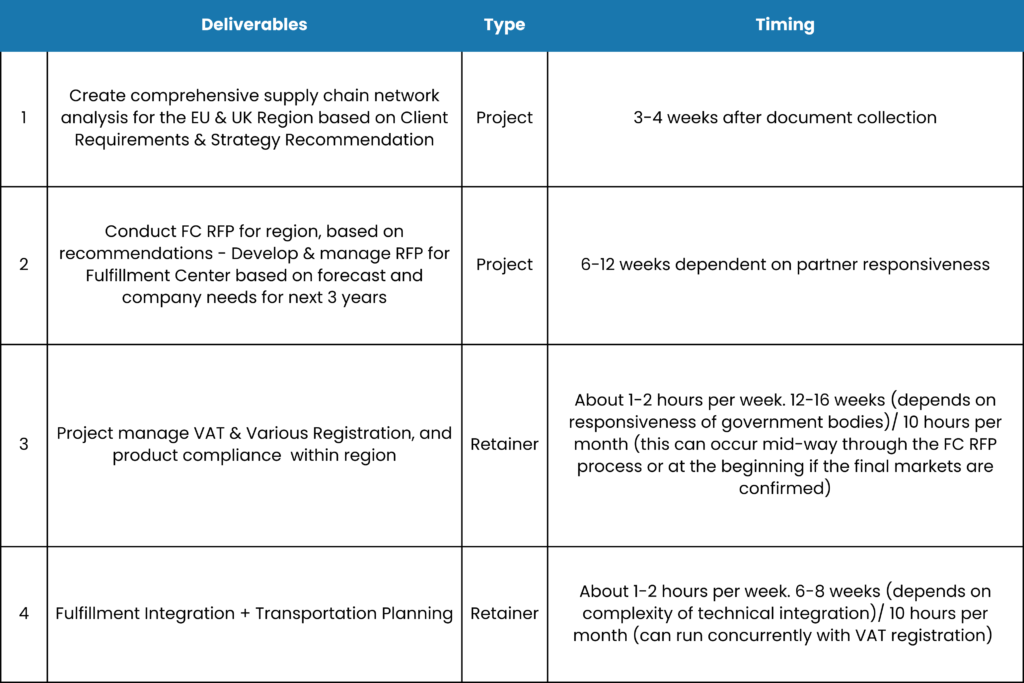eCommerce is rising in Europe and since the pandemic, there’s been no shortage of investors looking to expand into the area.
While the idea is simple and may align with most business niches, it’s not as easy to execute an expansion strategy without the right expertise at your disposal.
Right off the bat, before you go forward with making plans for setting up a supply chain localized in the region, it’s important that you gauge the market first.
Is the Market Right for You?
The first thing a company should be asking themselves is whether the market is right for them. This means gauging demand for your particular product.
The market is filled with eCommerce shoppers, as shown in the graph below:

You’ll need to work with your analysts to see whether the region is easy to market into. The competition for your particular product, the main competitors, etc. make up part of this analysis.
The other part of the analysis should evaluate whether you have the resources to begin a marketing venture in the region.
An overview of the demand for various product categories in 2021 across the EU-27 is as follows:

Can You Set Up a Supply Chain?
The second question a company needs to ask itself before expanding is whether it can set up a viable supply chain for the location it’s targeting.
Common questions in this regard include:
- Can you ship directly to the locations you want to target?
- Is it cost prohibitive to ship from the US directly to customers?
- Do you have a team to support increased operations:
1) Logistics Planning
2) Inventory & Demand Planning
3) Fulfillment Management
These questions can help you get on to the more complicated part of setting up in the EU and the UK. The idea is to set up operations for shipping to customers directly from the US first.
Although it’s possible to set up as a legal entity in the region, it’s advisable that you consult a supply chain expert to find out if it’s the best option for you.
To help businesses get started, here’s an overview of how a company should proceed:
What to Think About?
Tech Stack
Once you’ve gauged the market and have a substantial plan for setting up a supply chain, you should focus on the technology that you’re going to need for your operations.
If you have an existing ERP that comes with all the relevant modules, make sure that it has the capability to add in more channels and also supports foreign currencies, taxes and other cross-border protocols.
You’ll need something robust enough to connect you with your suppliers, vendors, transporters and carriers.
As per Izba’s analysis, the only thing you’ll actually need is Shopify Markets, a cross-border management tool that allows customizations by country, continent or by products.
Unfortunately, you can’t rely on stand-alone tools that don’t support integrations at this point because you’ll need several datasets and channels to be connected for streamlined communication and coordination.
Product
The product you’re looking to push into the new market can have its own requirements in terms of compliance and handling.
From shipping to compliance standards, laws and regulations may vary from the US.
You’ll need to get in touch with a fulfillment center as well as ungate.eu to check how your product is handled in the target market.
For example, there are special compliance requirements for the following products:
- Toys
- Electronics
- Food
- Health Products
- Baby Care / Items
While FCs can tell you much about the storage and shipment, you’ll have to take responsibility for extended producing responsibilities (EPRs) such as the Environmental Registration that’s required for countries such as Germany and France.
Finances
When it comes to finances, here’s an overview of what you’ll be needing:
- VAT Number
- EORI Number
- OSS Registration (for EU)
- Indirect Representation
- Fiscal Representation (Netherlands)
- Prepare and manage your VAT returns and payments
- Retaining statutory information
- Managing any Tax Authority audits
VAT
The EU’s standard VAT rate is 21 percent. New changes to the law state that the threshold for distance sales of goods to buyers in other EU Member States varying from EUR 35.00 (in France) – EUR 100.00 (in Germany) will be replaced with the new EU-wide threshold of EUR 10.00.
OSS
The One-Stop Shop (OSS) is a single VAT return that works for several countries in the EU, making the remitting and filing process for VAT easier.
Import Tariffs
Import tariffs can differ with the products you’re importing, resulting in a 0-17% increase in the total cost. However, there is no customs duty for products provided directly to the buyer whose value is under €150.
Indirect and Fiscal Representation
For most countries, you’ll need an indirect representative.
You’ll need a customs agent to act as an indirect rep for your company, taking responsibility for the content being imported into the target company.
For the Netherlands, in particular, you’ll require fiscal representation as well.
Think of fiscal representatives as people appointed to act as local entities to represent foreign traders for VAT purposes. They take on the liability of foreign entities looking to expand in the region.
What will it cost to set up in the EU?
As per Izba’s analysis, initial set-ups in the target market can cost anywhere above $3,000 depending on the market situation and the scale of expansion.
Whereas, the costs for running the setup for the first year would be $8,000, followed by $5,000 for each year thereafter. Monthly costs can be around $200-$400.
How long will it take to set up in the EU?
Izba’s analysis indicates that the initial setup time could be about 22 to 32 weeks. A breakdown of this timeline can be seen below:

Experts recommend setting up a fulfillment center only when you see the sales in the region grow to be at least 5% or more of your total annual sales.
Izba also offers a FC RFP guide for businesses to streamline the process of narrowing down possible options.
Want More?
Companies have their work cut out for them and to help make it easier, startup supply chain consulting firms like Izba are ready to streamline the whole process for you.
Get in touch with them to have the full guide as well as consultation for your specific scenario!





2 thoughts on “How to Set Up Your Business in the EU and UK?”
Pingback: 6 Key Aspects to Include in Your Website Design - izba
Pingback: 5 Key Tips for Managing Inventory - izba